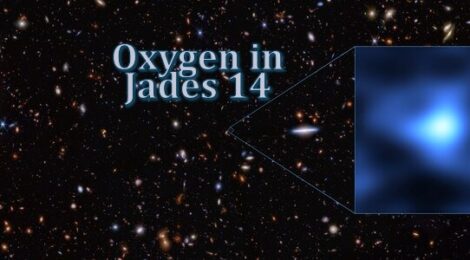
Cold Nucleogenesis And Early Metallicity Is Vital Progenitor of Star and Galaxy Formation and Evolution
Stars and Galaxies Form Early and Effectively With More Than Just Hydrogen And Helium
The GAC5D (my Graviton Aether Casimir 5D) model uniquely proposes that nuclear matter condenses directly from the primordial cold structured vacuum of the graviton aether, rather than being forged solely through the hot Big Bang and high-temperature stellar fusion. This process, termed cold nucleogenesis, emerges from Casimir-like field geometries and is not dependent on time-delayed star lifecycles.
This feature offers a profound explanatory advantage:
Reconciliation with JWST Observations
- The James Webb Space Telescope has revealed massive, well-structured, and metal-enriched galaxies at redshifts z > 14, only ~280 million years after the Big Bang.
- Such galaxies should not exist under the standard ΛCDM framework, which requires hundreds of millions of years for successive stellar generations to enrich the interstellar medium with metals.
- GAC5D cold nucleogenesis explains these findings as the natural outcome of a universe that is metal-rich from the beginning—enabling stars and galaxies to cool, condense, and mature rapidly.
Gergö Popping, an ESO astronomer at the European ALMA Regional Centre, says:
“I was really surprised by this clear detection of oxygen in JADES-GS-z14-0. It suggests galaxies can form more rapidly after the Big Bang than had previously been thought.”
European Southern Observatory https://www.eso.org/public/news/eso2507/
Catalytic Driver of Early Star and Galaxy Formation
- Observation of early metals (metals in cosmology being defined as everything heavier than helium) are not merely passive records—the metals are vital active catalysts and progenitors.
- In the GAC5D framework, the early presence of elements like lithium, carbon, oxygen, silicon, and iron dramatically enhances:
- Radiative cooling of primordial gas
- Cloud fragmentation
- Star formation efficiency
- Dust and molecule formation
- This leads to faster, richer, and more complex and more understandable galaxy formation than the standard model allows.
Experimental Verification on Earth
- Unlike dark matter, dark energy, or inflationary fields, cold nucleogenesis is not hypothetical.
- Our laboratory experiments conducted over almost 40 years and repeated in many major laboratories in condensed matter and gas-phase systems (our microcosmic scale experimental analogs to the universe as a cosmic scale experiment) have repeatedly shown:
- Formation of helium and heavier nuclei in low-temperature, high-coherence quantum cavities
- Anomalous heat at watt-kilowatt output for minutes to months and anomalous low energy radiation signatures consistent with low-energy nuclear reactions
- These observations validate the plausibility of the GAC5D mechanism under real-world conditions.

Every Schoolboys favorite, but not the Big Bang
“Where conventional cosmology invokes inaccessible early-time firecrackers (Big Bang) and untestable scalar fields, GAC5D provides a laboratory proven observable pathway from quantum coherence to cosmic complexity.”
Summary: A Unique Convergence of Insight
| Axis | Conventional Cosmology | GAC5D Model |
| Early Metals | Require multiple stellar generations | Precedes early star formation and proceeds in parallel with stellar hot nucleosynthesis |
| Galaxy Formation Timeline | Requires hundreds of Myr | Can begin <100 Myr due to early metal-enhanced cooling |
| Experimental Support | None (early universe untestable) | Verified through lab-based cold fusion/nucleogenesis |
| Theoretical Unity | Multiple disconnected models | Unified via graviton aether and Casimir geometry |
Final Thought:
Cold nucleogenesis is not just a convenient fix—it is a natural consequence of a cold, coherent, geometrically structured universe observable from the micro-macro scale. It bridges cosmology and experiment, offering a path to unify the origins of matter, structure, and time letting the data do the talking.